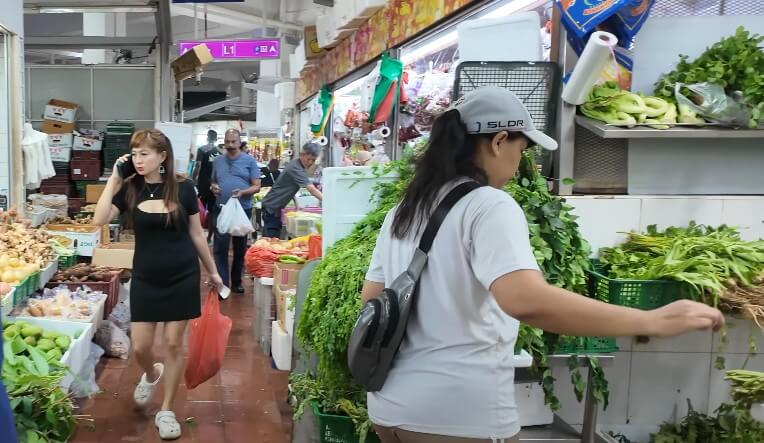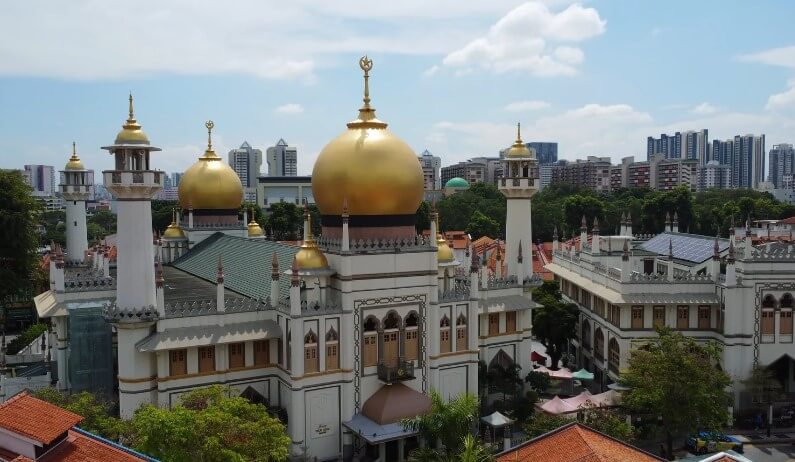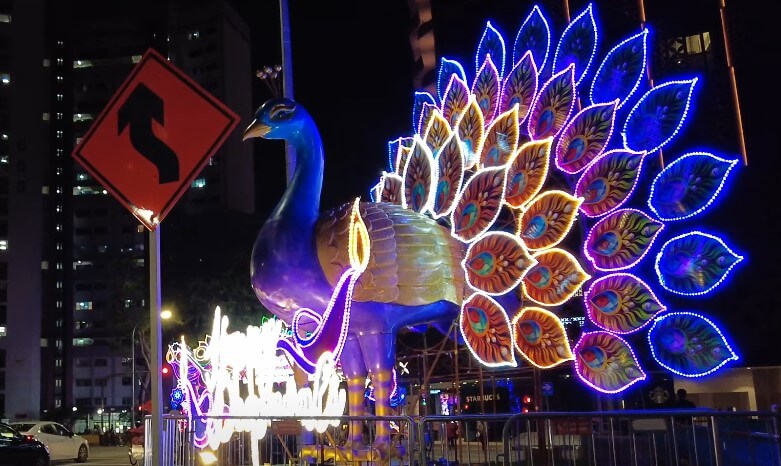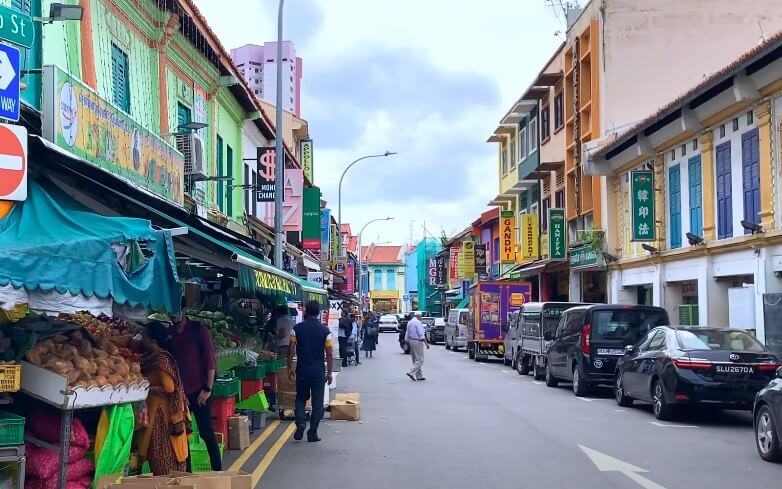Walking through Little India in Singapore is like stepping into a living museum of colors, aromas, and stories that span centuries. It is not just one of Singapore’s most vibrant historic districts, as it’s a sensory experience that blends heritage with the pulse of daily life.
From temples and mosques to hawker centers and art festivals, the neighborhood has a rhythm that draws you in slowly, corner by corner.
In this guide, you’ll find a carefully laid-out walking route that balances history, food, architecture, and living culture.
Think of it as a route map shaped by experience, one that shows you not only what to see but also how to savor it.
Let’s get started.
Quick Orientation
- Main stretch: Serangoon Road and its side streets
- Distance: about 3 km, flat and walkable
- Time needed: 3-4 hours at a relaxed pace
- Best times: early morning for freshness, late afternoon for softer light, or evenings during Deepavali light-up
- Start and end points: Little India MRT to Farrer Park MRT
Stop 1: Tekka Centre

Your walk begins at Tekka Centre, right next to Little India MRT. Opened in 1982 on the site of the original Kandang Kerbau Market, it’s still the go-to place for garlands, spices, and hawker food.
- What to eat: Murtabak, briyani, and roti prata are local favorites.
- What to see: The wet market downstairs buzzes in the mornings with butchers, fishmongers, and vegetable sellers.
- Etiquette: Queue patiently, return your tray, and never cut lines – Singaporeans value order in hawker culture.
Stop 2: Indian Heritage Centre
Walk a few minutes down Campbell Lane to reach the Indian Heritage Centre (IHC).
Opened in 2015, it is managed by the National Heritage Board and tells the story of South Asian communities in Singapore and beyond.
- Architecture: The glass facade is inspired by India’s step-wells, with angular staircases visible from outside.
- Inside: The galleries cover migration, religion, and trades, all curated in a compact but engaging way.
- Tip: Check online for temporary exhibitions before you go.
Stop 3: Campbell Lane & Little India Arcade

Step out of the IHC and straight into the bustle of Campbell Lane. On weekends and during festivals, the street fills with stalls selling flower garlands, brassware, and snacks.
Nearby, the Little India Arcade, a conserved row of 1913 shophouses, offers henna artists, sweet shops, and textile stores.
The conservation work done here since 1989 means the entire street feels like a preserved piece of history rather than a theme park.
Stop 4: Sri Veeramakaliamman Temple
A short stroll brings you to Sri Veeramakaliamman Temple, first built in 1855. It is Singapore’s earliest temple dedicated to the goddess Kali, worshipped by early migrant workers who sought protection.
- Architecture: The gopuram (tower) is a dense layer of colorful statues.
- Etiquette: Remove shoes, dress modestly, and ask permission before taking photos of worshippers.
- When to go: During puja hours or festivals like Pongal and Deepavali for a truly immersive atmosphere.
Stop 5: Walk of Faiths

Few places illustrate Singapore’s diversity like Little India. Within a few blocks, you’ll encounter:
- Abdul Gafoor Mosque – known for its star-and-moon motifs.
- Kampong Kapor Methodist Church – serving Tamil and English-speaking congregations since the 1890s.
- Church of the True Light – with roots in the early Chinese Christian community.
- Sri Srinivasa Perumal Temple – important in the annual Thaipusam festival.
If you want a structured approach, the National Heritage Board’s Walk of Faiths trail provides maps and context across 2.6 km.
Stop 6: House of Tan Teng Niah
On Kerbau Road sits the House of Tan Teng Niah, a rare Chinese villa in the middle of Little India. With its brightly painted facade, it has become one of the most photographed buildings in Singapore.
Built in 1900 by a Chinese businessman, it’s a reminder that Little India has always been multicultural.
Stop 7: Race Course Road
In the mid-1800s, Farrer Park Racecourse drew crowds for horse racing. Over time, it became a stage for football matches, rallies, and even Singapore’s first flight demonstration.
Today, Race Course Road is better known for banana-leaf restaurants and curry houses.
- What to eat: Fish-head curry, tandoori chicken, and vegetarian thalis.
- Where to go: Established restaurants like Muthu’s Curry have been serving locals for decades.
Stop 8: Mustafa Centre
No walk in Little India is complete without a quick loop through Mustafa Centre. It’s a retail maze where you can find everything from electronics to gold jewelry.
Hours change from time to time, but it’s traditionally famous for being open late into the night. Treat it as a treasure hunt rather than a shopping list destination.
Seasonal Highlights

Deepavali Light-Up
Every October or November, Serangoon Road is dressed in glowing arches and lights. Temporary bazaars spring up, selling festive sweets and saris.
Walking in the evenings during this period is magical.
Thaipusam Procession
In early February, devotees carry kavadi along Serangoon Road from Sri Srinivasa Perumal Temple to Sri Thendayuthapani Temple.
It’s an intense, spiritual event. Always stand back, watch respectfully, and avoid blocking the procession.
ARTWALK Little India
Each January, the precinct becomes a giant outdoor gallery as part of Singapore Art Week. Expect murals, installations, and performances created by LASALLE College of the Arts students and local artists.
How to Get Around
- MRT: Start at Little India (NE7/DT12) and end at Farrer Park (NE8).
- Walking: Most sidewalks are flat and shaded by shophouses. Be mindful of occasional steps on five-foot-ways.
- Weather tips: Carry water and an umbrella. Singapore’s weather can swing from blazing sun to sudden showers.
Temple and Mosque Etiquette
- Dress with shoulders and knees covered.
- Remove shoes before entering Hindu temples and mosques.
- Avoid flash photography and always ask before taking close-ups of worshippers.
- Follow volunteers’ instructions inside sacred spaces.
Food Along the Way
Here are some stops to fuel your walk:
| Location | What to Try | Notes |
| Tekka Centre | Briyani, prata, murtabak | Hawker culture at its best |
| Campbell Lane Arcade | Jalebi, laddu, gulab jamun | Perfect for sweet lovers |
| Race Course Road | Banana leaf meals, fish-head curry | Restaurants with long heritage |
Sample Walking Plan
| Leg | From → To | Distance | Highlights |
| 1 | Little India MRT → Tekka Centre | 200 m | Breakfast at hawker stalls |
| 2 | Tekka Centre → IHC | 350 m | Step-well facade, history galleries |
| 3 | IHC → Campbell Lane & Arcade | 200 m | Henna, sweets, and garlands |
| 4 | Arcade → Sri Veeramakaliamman | 500 m | Temple visit |
| 5 | Temple → Abdul Gafoor Mosque / Kampong Kapor Church | 600 m | Multi-faith landmarks |
| 6 | Faiths Loop → House of Tan Teng Niah | 400 m | Colorful villa photo stop |
| 7 | Tan Teng Niah → Race Course Road | 600 m | Banana-leaf curry houses |
| 8 | Race Course Road → Mustafa Centre → Farrer Park MRT | 700 m | Shopping maze finale |
Why It’s More Than a Tourist Walk
View this post on Instagram
Little India isn’t just a checklist of sights – it’s living culture. The conservation efforts since 1989 mean the district preserves both streetscape and spirit.
Migration shaped its story, festivals keep it alive, and food ties everything together. It’s a place where heritage is not stored in glass cases but lived on sidewalks and in shrines.
Final Notes for a Smooth Visit
- Crowds: Weekends are the busiest. For quieter moments, go on a weekday morning.
- Accessibility: MRT stations are wheelchair-friendly, though some shophouse arcades have steps.
- Weather: Dress light, hydrate, and take shade breaks.
- Respect: Be mindful inside religious sites and patient in crowded markets.
Closing Thoughts
A walk through Little India is more than sightseeing – it’s an immersion into a neighborhood where past and present coexist in daily rituals, festivals, and street food.
Take it slow, keep your senses open, and don’t be afraid to wander off the main stretch.
The best parts of Little India often reveal themselves when you pause, look around, and follow the scent of spices or the sound of temple bells.

